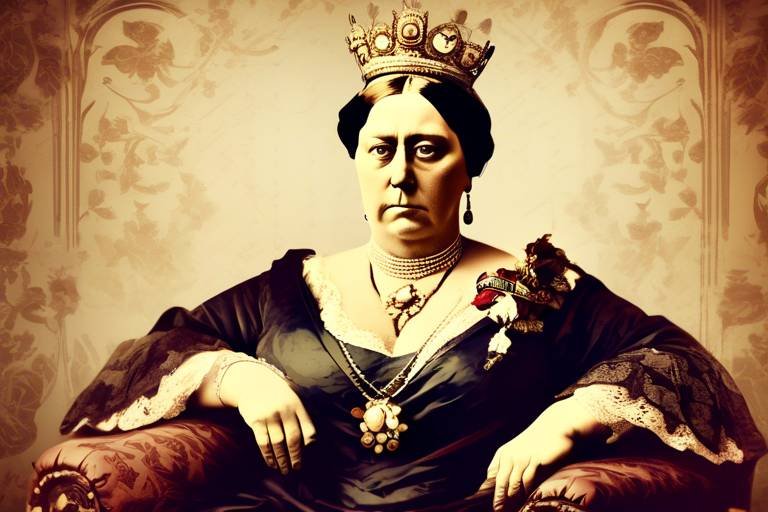Riemann: The Mathematician of Geometry
Bernhard Riemann, a name that resonates through the corridors of mathematical history as the visionary mathematician of geometry. His life's work is a tapestry woven with threads of brilliance and innovation, forever altering the landscape of mathematics. Riemann's legacy is not just a footnote in textbooks; it is a symphony of mathematical elegance that continues to inspire and challenge scholars to this day.

Early Life and Education
Bernhard Riemann, the renowned mathematician of geometry, was born into a humble family in Breselenz, a village in the Kingdom of Hanover, in 1826. Despite the financial constraints his family faced, young Riemann displayed exceptional mathematical talent from an early age, sparking curiosity and wonder in his mind about the mysteries of numbers and shapes. His academic journey began at the Lyceum in Hanover, where he received a solid foundation in mathematics under the guidance of his teachers, who recognized his extraordinary potential.
Driven by his passion for exploring the intricacies of mathematical concepts, Riemann pursued higher education at the University of Göttingen in 1846. It was at this prestigious institution that he encountered influential figures such as Gauss, Dirichlet, and Eisenstein, whose profound insights and mentorship played a pivotal role in shaping Riemann's mathematical interests and guiding him towards groundbreaking discoveries in the field of geometry.
During his time at the University of Göttingen, Riemann immersed himself in the study of mathematics, delving into complex theories and abstract concepts that challenged conventional thinking. His thirst for knowledge and relentless pursuit of intellectual growth set the stage for his future contributions to the world of mathematics, laying the groundwork for his revolutionary ideas that would redefine the very fabric of geometric understanding.

Riemannian Geometry
Riemannian Geometry is a fascinating branch of mathematics that revolutionized our understanding of curved spaces and their properties. Bernhard Riemann's groundbreaking ideas in this field laid the foundation for modern differential geometry and have found applications in various scientific disciplines, from physics to cosmology.
At the core of Riemannian Geometry is the concept of metrics, which define distances and angles on curved surfaces, allowing mathematicians to study the intrinsic geometry of these spaces. Riemann introduced the notion of a Riemannian metric, which generalizes the familiar Euclidean metric to spaces with arbitrary curvature.
One of the key insights of Riemannian Geometry is the use of tensors to describe geometric objects in a coordinate-independent manner. Tensors provide a powerful tool for formulating the laws of physics on curved manifolds, enabling the development of Einstein's general theory of relativity.
Riemann's work on Riemannian Geometry also paved the way for the study of geodesics, which are the shortest paths between points on a curved surface. Understanding geodesics is crucial for applications in navigation, robotics, and even the design of space missions.
Moreover, Riemannian Geometry has deep connections to topology, the branch of mathematics that studies the properties of shapes that remain invariant under continuous deformations. By combining ideas from geometry and topology, mathematicians can explore the intricate structures of complex manifolds and uncover hidden symmetries.

The Riemann Hypothesis
The Riemann Hypothesis is a fundamental conjecture in mathematics that continues to captivate the minds of mathematicians worldwide. Proposed by Bernhard Riemann in 1859 in his seminal paper "On the Number of Primes Less Than a Given Magnitude," this hypothesis pertains to the distribution of prime numbers and their connection to the zeros of the Riemann zeta function.
Central to the Riemann Hypothesis is the zeta function, denoted by ζ(s), which is defined for complex numbers s with real part greater than 1. The hypothesis posits that all non-trivial zeros of the zeta function lie on a critical line in the complex plane with real part 1/2. While extensive numerical evidence supports the validity of the hypothesis, a rigorous proof remains elusive, making it one of the seven Millennium Prize Problems recognized by the Clay Mathematics Institute.
The implications of proving the Riemann Hypothesis extend far beyond number theory, with ramifications in cryptography, quantum physics, and other branches of mathematics. The profound connections between prime numbers and the zeta function underscore the intricate interplay between seemingly disparate areas of mathematics, highlighting the elegance and depth of Riemann's mathematical insights.

Legacy and Impact
This article explores the life and contributions of Bernhard Riemann, a prominent mathematician known for his groundbreaking work in geometry and analysis, including the development of Riemannian geometry and the Riemann hypothesis.
Riemann's legacy in the world of mathematics is profound and far-reaching, leaving an indelible mark on various fields of study. His innovative ideas and theories continue to shape the way mathematicians approach complex problems and explore the intricacies of the mathematical universe.
One of the key impacts of Riemann's work is evident in the field of number theory, where his contributions have paved the way for significant advancements in understanding the distribution of prime numbers and the interconnectedness of different mathematical concepts.
Moreover, Riemann's insights have had a profound impact on the realm of physics, particularly in the field of cosmology, where his ideas on curved spaces and metrics have provided a theoretical framework for understanding the fabric of the universe and the nature of spacetime.
His work has also influenced the field of computer science, with applications in algorithms, cryptography, and data analysis that draw upon the principles of Riemannian geometry and mathematical analysis.
Overall, Riemann's legacy continues to inspire generations of mathematicians and scientists to push the boundaries of knowledge, explore new frontiers, and seek solutions to some of the most challenging problems in mathematics and beyond.

Riemann Surfaces
Riemann Surfaces are complex manifolds that hold a significant place in the realm of algebraic geometry and complex analysis. These surfaces provide a powerful tool for visualizing complex functions and mappings, offering insights into the intricate nature of mathematical functions. By representing functions in a geometric framework, Riemann surfaces allow mathematicians to study the behavior of complex functions in a more tangible and intuitive manner.
One key aspect of Riemann surfaces is their ability to handle multivalued functions, which have multiple outputs for a single input. Through the concept of branch cuts and branch points, Riemann surfaces help resolve the ambiguity associated with multivalued functions, allowing for a more coherent understanding of complex analysis.
Riemann surfaces also play a crucial role in understanding the topology of complex functions, providing a geometric structure that reflects the underlying algebraic properties. By associating each point on a Riemann surface with a unique complex number, mathematicians can explore the intricate connections between different points and study the behavior of functions in a holistic manner.
Moreover, Riemann surfaces offer a bridge between complex analysis and algebraic geometry, allowing mathematicians to investigate the geometric properties of algebraic curves and surfaces through the lens of complex functions. This interdisciplinary approach has led to significant advancements in both fields, opening up new avenues for research and exploration.
In essence, Riemann surfaces serve as a visual and conceptual tool that enriches the study of complex functions and provides a geometric perspective on the intricate relationships between different mathematical concepts. Their versatility and utility make them indispensable in various branches of mathematics, shaping the way mathematicians approach complex analysis and algebraic geometry.

Mathematical Analysis
When it comes to mathematical analysis, Bernhard Riemann's contributions are nothing short of revolutionary. His work in this field has laid the groundwork for modern calculus and functions, shaping the way we understand and manipulate mathematical concepts.
One of Riemann's most significant achievements in mathematical analysis is the development of the Riemann integral. This integral, named after him, provides a rigorous definition of the concept of integration and is fundamental to the study of calculus.
In addition to the Riemann integral, he also made substantial contributions to fractional calculus through the Riemann–Liouville fractional calculus. This extension of traditional calculus allows for the differentiation and integration of non-integer order functions, opening up new possibilities in mathematical analysis.
Riemann's exploration of functions and their properties went beyond the traditional limits, pushing the boundaries of mathematical analysis. His insights into the behavior of functions, particularly in the complex plane, have paved the way for advancements in areas such as complex analysis and number theory.
Moreover, Riemann's work on the theory of functions of a complex variable has had a profound impact on modern mathematics. His investigations into the properties of complex functions and their mappings have provided valuable insights into the nature of functions in higher dimensions.
Overall, Riemann's contributions to mathematical analysis have not only enriched the field but have also inspired generations of mathematicians to explore the depths of mathematical theory and its applications.

Personal Life and Challenges
Exploring the personal life of Bernhard Riemann unveils a side of the esteemed mathematician often overshadowed by his academic achievements. Despite his mathematical prowess, Riemann faced numerous challenges and adversities throughout his life. Born into a modest family in Breselenz, Germany, in 1826, he encountered financial difficulties that persisted even during his academic pursuits. His early years were marked by struggles to make ends meet, emphasizing the resilience and determination that would later define his character.
Riemann's health was a constant concern, with reports suggesting that he battled various illnesses, including tuberculosis, which plagued him for a significant portion of his life. These health challenges not only impacted his personal well-being but also posed obstacles to his academic pursuits. Despite facing these physical setbacks, Riemann's dedication to mathematics remained unwavering, showcasing his unwavering commitment to his passion amidst adversity.
Moreover, the societal norms and expectations of the time added another layer of complexity to Riemann's personal life. As a mathematician in the 19th century, he navigated a world where intellectual pursuits often clashed with societal conventions. The pressures of conforming to societal standards while pursuing his mathematical interests likely presented additional challenges for Riemann, highlighting the balancing act he had to maintain between his personal and professional life.
Furthermore, Riemann's introverted nature and preference for solitude contributed to the image of a reclusive mathematician, often engrossed in his work and introspective by nature. While his reserved demeanor may have isolated him from the social circles of the time, it also provided him with the solitude necessary for deep contemplation and groundbreaking mathematical insights.
Despite the personal challenges and obstacles he faced, Bernhard Riemann's legacy as a pioneering mathematician endures, a testament to his indomitable spirit and unwavering dedication to the pursuit of knowledge amidst life's trials and tribulations.

Contemporary Relevance
When discussing the contemporary relevance of Bernhard Riemann's work in mathematics, it becomes evident that his theories and ideas continue to shape and influence the field to this day. The Riemann hypothesis, in particular, stands as a monumental challenge that mathematicians strive to solve, with its implications reaching far beyond the realm of number theory.
Riemann's contributions to geometry, analysis, and complex functions have paved the way for advancements in various branches of mathematics, including algebraic geometry, differential equations, and theoretical physics. His concepts on curved spaces and Riemann surfaces have found applications in fields such as general relativity, quantum mechanics, and cryptography, demonstrating the enduring impact of his work.
Moreover, the ongoing efforts to prove or disprove the Riemann hypothesis exemplify the enduring fascination with Riemann's legacy and the quest for deeper understanding in number theory. Mathematicians worldwide continue to explore new avenues and approaches to tackle this enigmatic problem, showcasing the enduring relevance and significance of Riemann's mathematical legacy.
Frequently Asked Questions
- What is the significance of Bernhard Riemann in the field of mathematics?
Bernhard Riemann was a pioneering mathematician whose work revolutionized various branches of mathematics, particularly in the realms of geometry and analysis. His contributions to Riemannian geometry, the Riemann hypothesis, and mathematical analysis have had a lasting impact on modern mathematics and continue to inspire researchers worldwide.
- What is the Riemann hypothesis, and why is it considered important?
The Riemann hypothesis is a fundamental conjecture in number theory that deals with the distribution of prime numbers. It remains one of the most significant unsolved problems in mathematics, with implications for various areas of mathematical research. Solving the Riemann hypothesis would not only deepen our understanding of number theory but also have profound consequences across multiple disciplines.
- How do Riemann surfaces contribute to the field of mathematics?
Riemann surfaces are complex manifolds that provide a geometric representation of complex functions and mappings. They play a crucial role in algebraic geometry and complex analysis, offering insights into the behavior of complex functions and their interactions. Understanding Riemann surfaces is essential for studying complex variables and their applications in diverse mathematical contexts.
- What is the legacy of Bernhard Riemann, and how does it continue to influence modern mathematics?
Riemann's legacy lies in his groundbreaking ideas and theories that have shaped the landscape of mathematics for generations. His work on Riemannian geometry, the Riemann hypothesis, and mathematical analysis has inspired new research directions and advancements in fields such as physics, computer science, and number theory. The ongoing relevance of Riemann's contributions underscores his enduring impact on the mathematical community.



















